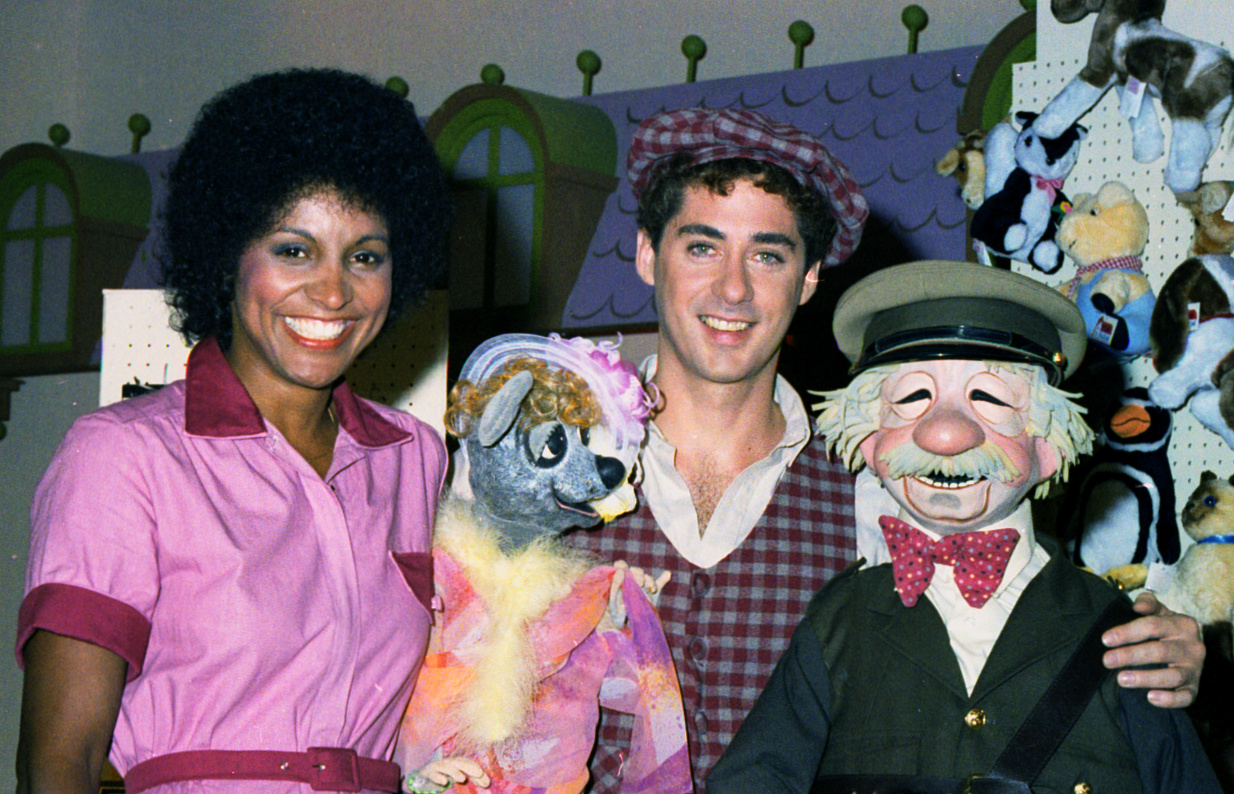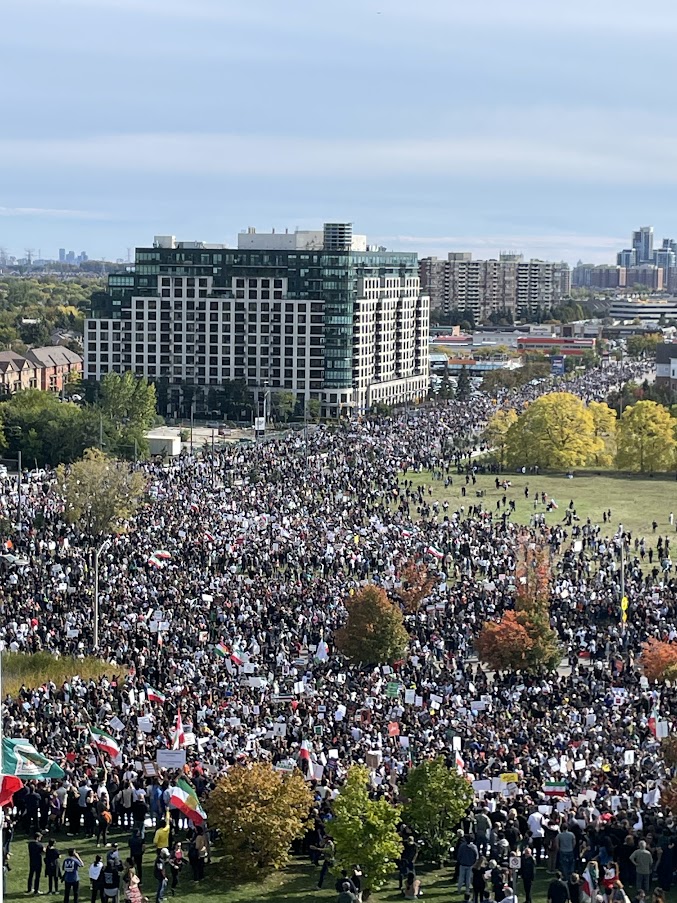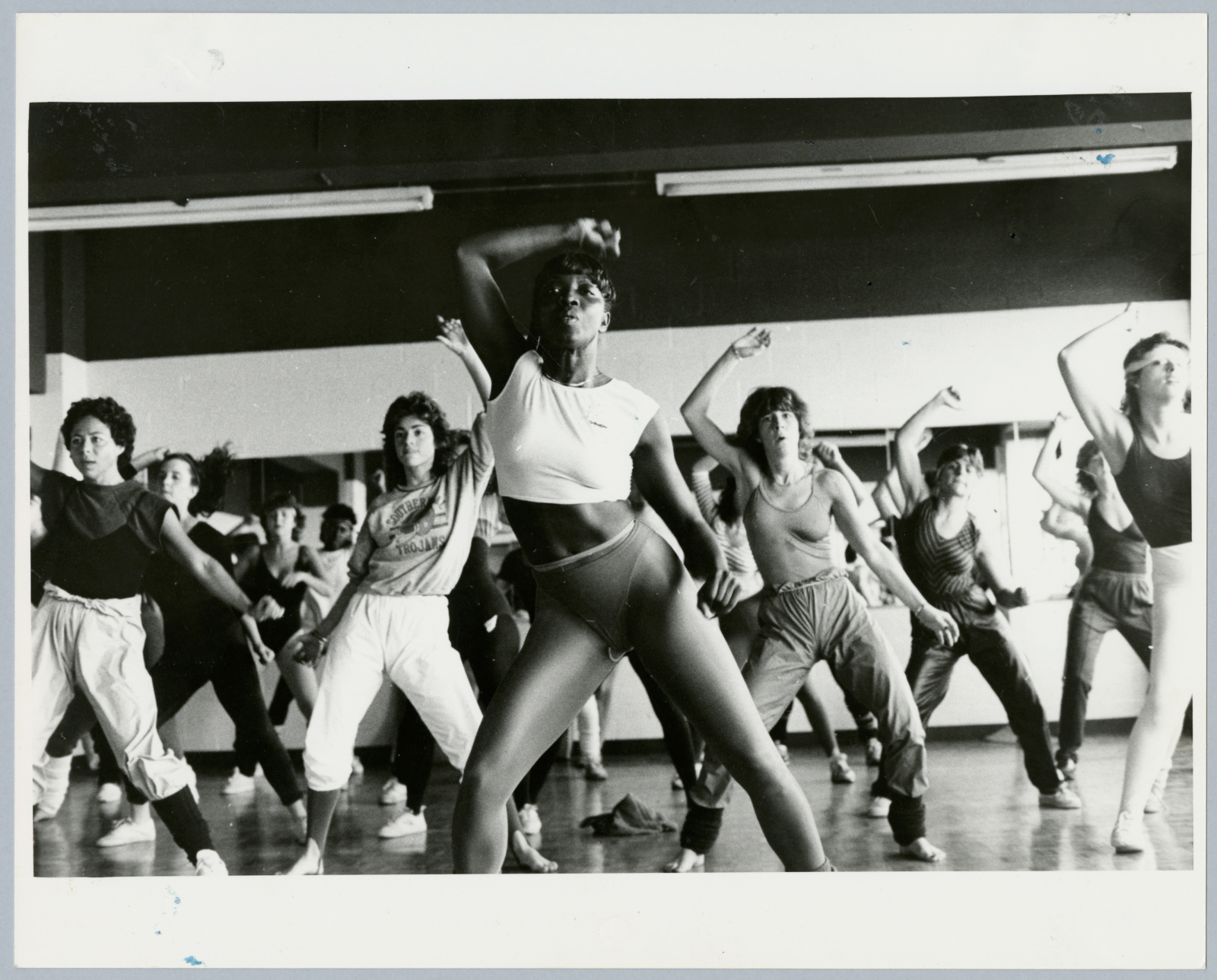Between 1975 and 1985, political events in Vietnam, Cambodia and Laos led to a humanitarian crisis that saw more than 100,000 refugees from these nations arrive in Canada. A new perspective on this crisis is shared in Artifactuality — a podcast series that imagines a museum of the future made up entirely of the stories we tell each other. In the episode “Hearts of Freedom,” listeners will hear podcast host and prolific novelist Kim Thúy talk to refugee history expert Dr. Stephanie Stobbe about their journeys to Canada and how their work is contributing to our understanding of the story of the “boat people.”
Download and subscribe to Artifactuality: Stories From the Museum of the Future wherever you get your podcasts.
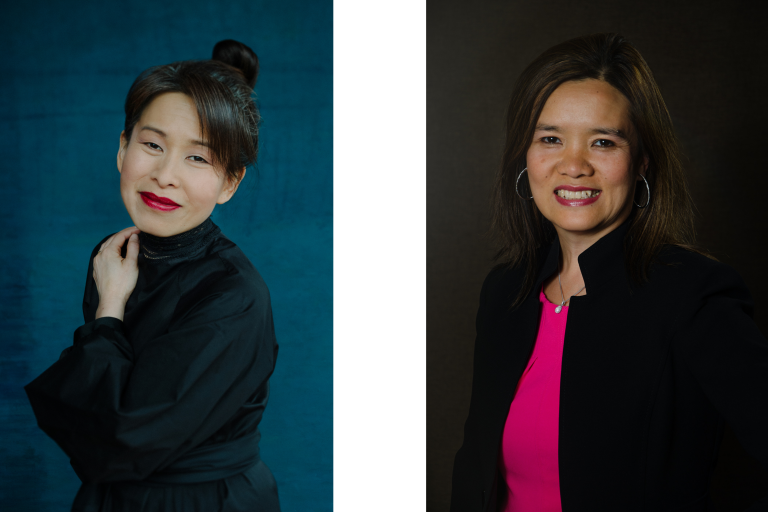
Kim Thúy and Dr. Stephanie Stobbe.
Photo: Sarah Scott
Canada Takes a New Approach to Supporting Refugees
The fall of South Vietnam to Communist forces in 1975 left many Vietnamese, Cambodian and Laotian people in a highly vulnerable position. Canada responded by allowing the private sponsorship of refugees for the first time in its history. By 1985, with the help of thousands of individuals, groups and churches, 110,000 refugees were successfully settled, mainly in Toronto, Montréal and Vancouver. The Private Sponsorship of Refugees Program — the first of its kind in the world — continues today.
Thousands of Refugee Stories, Each One Unique
After fleeing Vietnam, Kim Thúy and her family ended up in a crowded Red Cross refugee camp in Malaysia. At first, they slept on the ground, but with the help of other families, they managed to build a shelter using whatever materials they could find near the camp. This painting by Truong Chanh Trung depicts daily work at a Vietnamese refugee centre in Malaysia with a similar shelter in the background:
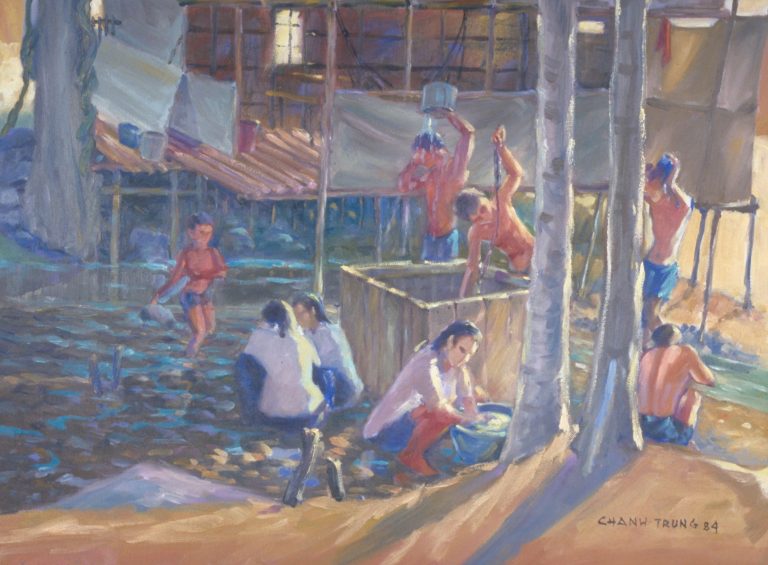
Painting by Truong Chanh Trung, 1984.
CMH artifact number 91-449.
Stephanie Stobbe’s family fled Laos when constant bombing made it too dangerous to stay there. They had to leave secretly, crossing the Mekong River into Thailand in a small boat.
“The Lao soldiers were told to shoot anyone trying to leave, and the Thai soldiers were told to shoot anyone trying to land, because they didn’t want any refugees there.”
They were taken in by a Thai family and spent two years farming in Thailand. Rather than be forced back to Laos, they eventually chose to go to a refugee camp. After six months in a crowded camp with little food and no running water, they boarded the first available flight out. It was bound for Canada.
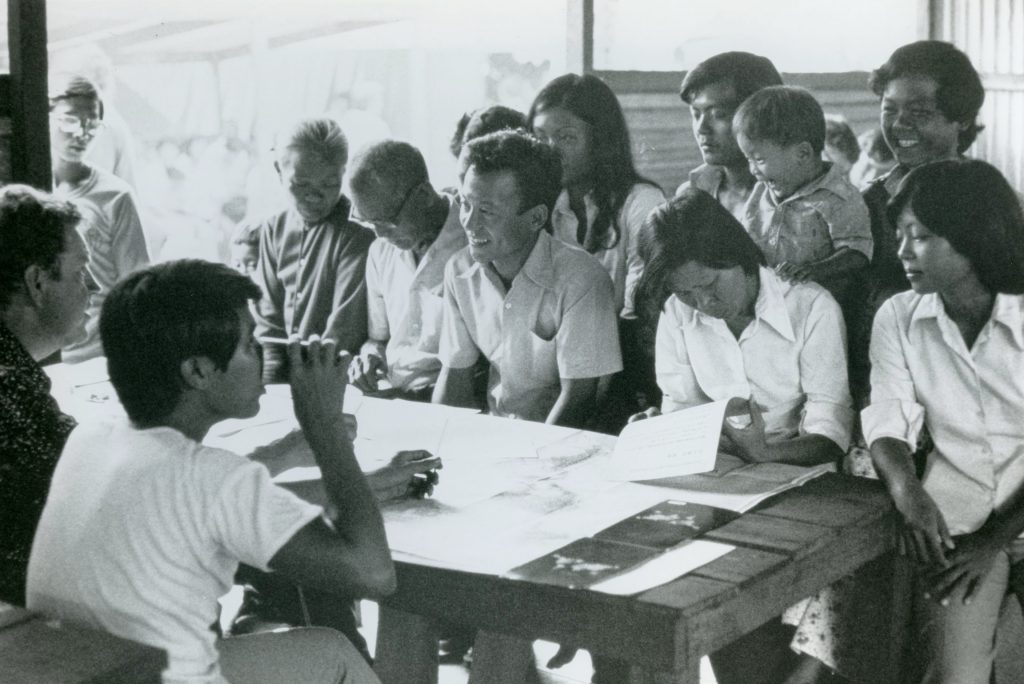
CIHS025 Refugee processing table in refugee camp.
Photo courtesy of Canadian Immigration Historical Society Collection.
A Future in Canada
Stobbe and Thúy could not have anticipated their futures in Canada when they started their refugee journeys. As Thúy recounts in her autobiographical novel, Ru, the resettlement process wasn’t easy. In the podcast, Stobbe recalls how her family ended up in rural Manitoba in the winter in a house with no electricity or running water. It was only after meeting members of the local Mennonite community that Stobbe’s family received the support they needed to adjust to life in Canada. Thúy and Stobbe express gratitude for the opportunities they had in Canada, but also recognize the ongoing need for refugee support. This is one reason Stobbe has helped lead the Hearts of Freedom oral history project and travelling exhibition, which recently launched at the Canadian Museum of History and is now on tour across Canada.
Former Refugees Pay it Forward
The story of Southeast Asian refugees in Canada continues, as the children and grandchildren of refugees work to build on the legacy of the boat people and share their stories. In 2015, former Malaysian refugee Phung Tran made headlines when she sponsored Syrian refugees in Canada. She sponsored the Alkhalaf family four decades after her own arrival in Canada. Stories like this highlight a model for refugee sponsorship that started in Canada and is being adopted around the world. Olivier Côté, a curator at the Canadian Museum of History, tells the story in this clip:
Hearts of Freedom Exhibition Aims to Make Change
Hearts of Freedom puts faces and stories to what can sometimes seem like cold statistics about Southeast Asia’s refugee movement. The stories illustrate the resilience of Southeast Asian refugees and how they have built meaningful lives in Canada despite immense obstacles, trauma and persecution. By seeing the exhibition and hearing the stories, Stobbe hopes that museum-goers will better understand their potential as change-makers. Thúy also emphasizes how one person or group of people can make a big difference in the lives of displaced people all over the world:
“Whenever you feel helpless, remind yourself that a mosquito can change the life of a person. When you have a mosquito in your room at night and you try to sleep, it’s very disturbing. So, every time that I feel that I’m too small to make any change, I think about that mosquito theory.”
The Hearts of Freedom exhibition is touring across Canada in 2023 and 2024. For information on where to see the show, and the Canadian Museum of History’s collection related to the Southeast Asian refugee movement, check out our show notes or visit historymuseum.ca.
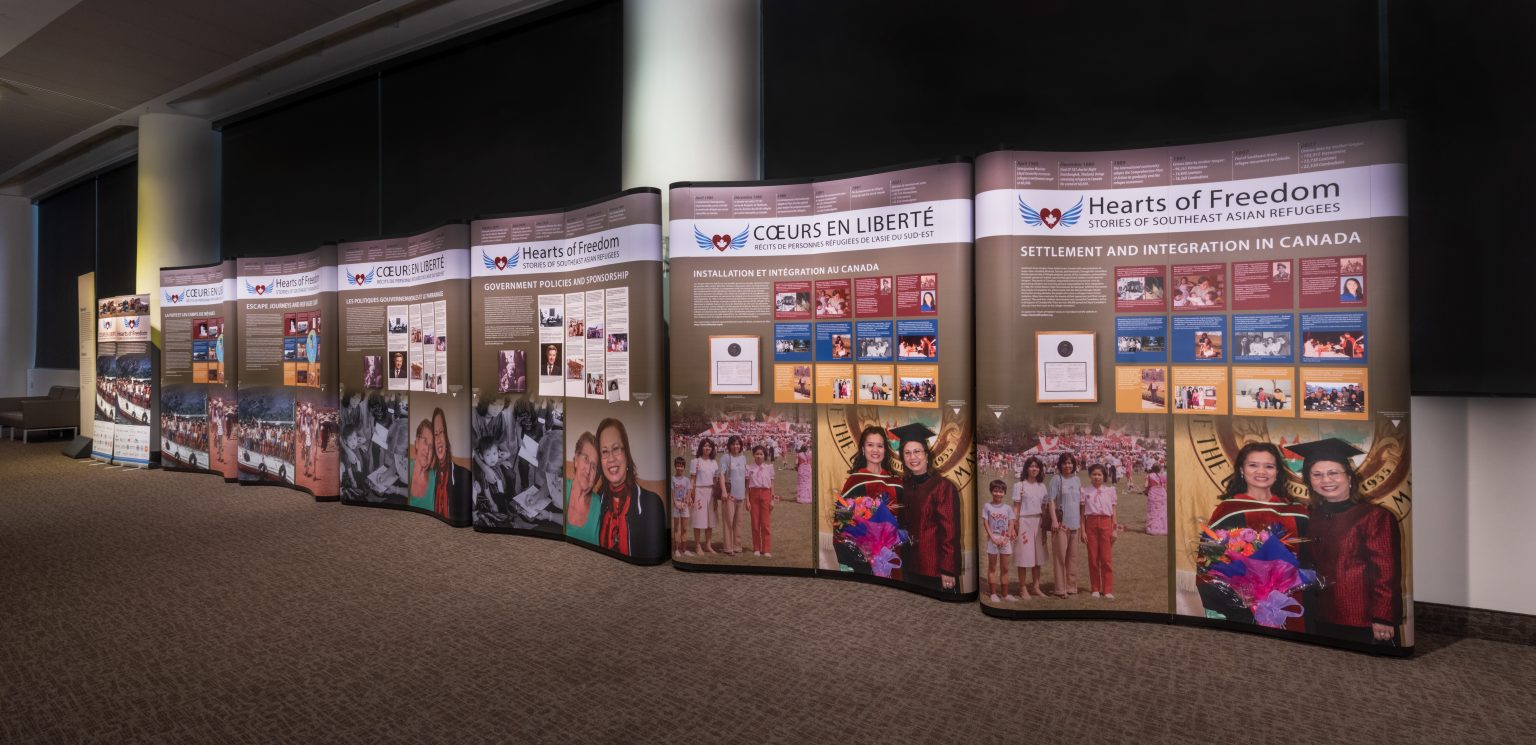
The Hearts of Freedom travelling exhibition displayed at the Canadian Museum of History.
Further Reading:
Further Reading:
- To hear all of the interviews, and see photos, research papers and other materials in English and in French, visit the Hearts of Freedom website.
- Kim Thúy’s website
- Kim Thúy in the Canadian Encyclopedia
- More about Stephanie Stobbe
- The basis for the Krysty Hilt / Phung Tran / Alkhalaf family story was three Macleans magazine articles related to the topic:
Download and subscribe to Artifactuality wherever you get your podcasts — Apple Podcasts, Spotify and Google Podcasts — or listen on YouTube.
Learn more about other episodes of Artifactuality:
- The Meaning of Mitsou – A conversation about stardom, style and reinvention
- Breaking Ice – The story of the Coloured Hockey League of the Maritimes
- We Have Always Been Here – Conversations with Blackfoot Elders about archaeology, time and territory
- Prince of Plastic – How Karim Rashid advanced democratic design
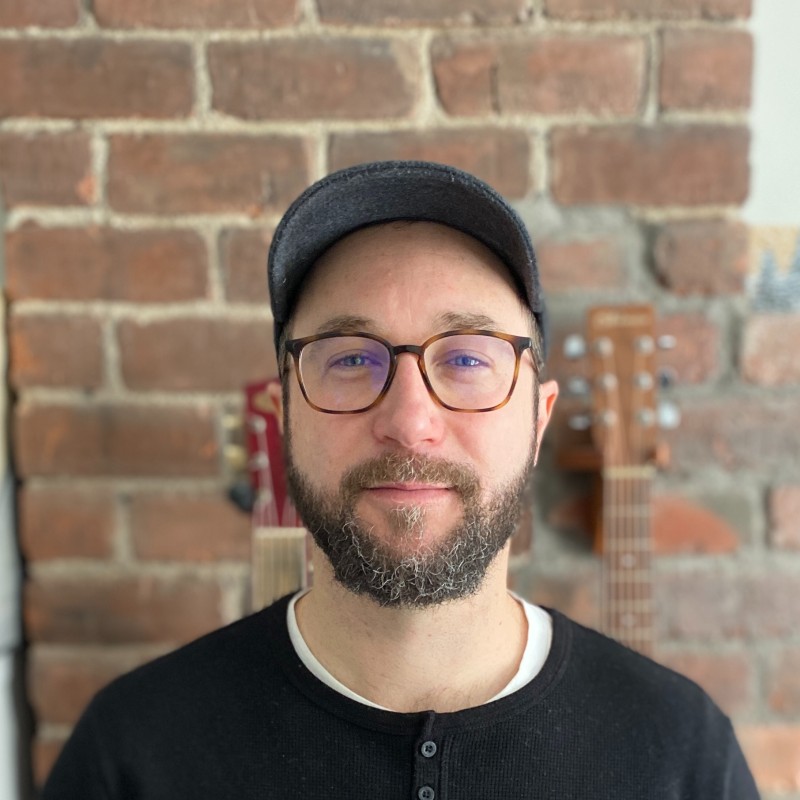
Daniel Neill
Daniel Neill is the Researcher for Sport and Leisure at the Canadian Museum of History. He is also a musician and PhD Candidate in Ethnomusicology at Memorial University of Newfoundland.
